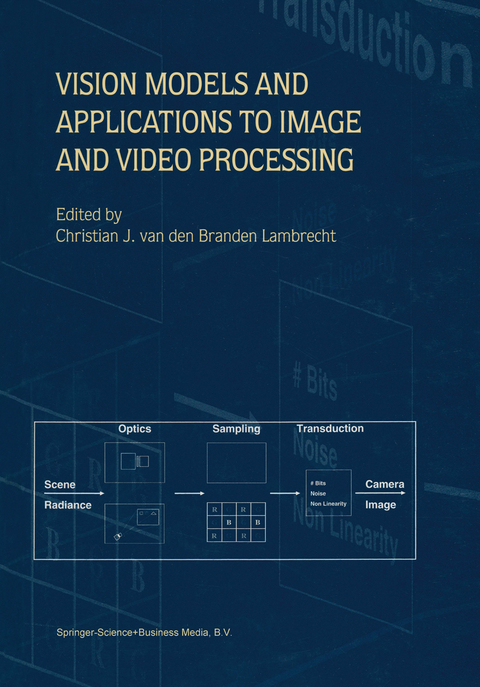
Vision Models and Applications to Image and Video Processing
Seiten
2001
Springer (Verlag)
978-0-7923-7422-0 (ISBN)
Springer (Verlag)
978-0-7923-7422-0 (ISBN)
I came to vision science trying to solve an engineering problem: I was trying to come up with test and measurement methodologies for digital video systems. This led me to study notions of vision science and vision modeling. It is an introduction to vision science and to the design and application of vision models in engineering.
I came to vision science trying to solve an engineering problem: I was trying to come up with test and measurement methodologies for digital video systems. One of the metrics I wanted to use was some measurement of image quality. After some experiments and after an overview of the literature, I had to realize that simple computational metrics, such as the mean square error, are not very effective for this purpose. This led me to study notions of vision science and vision modeling. As an engineer, I found it fascinating. Vision science uses computational tools and modeling techniques that are very similar to what we use in signal processing, yet it brings you to a new domain that lies at the intersection of engineering, biology and cognitive psychology. Over the years, vision science has made tremendous contributions to engineering and to the field of image processing in particular. Such contributions include half toning matrices for the printing industry, color correction for digital cameras, quantization matrices for image coding. As imaging devices are becoming commodities, the impact of vision science is becoming even more significant. This book is meant to appeal to an engineering audience. It is an introduction to vision science and to the design and application of vision models in engineering. To achieve this goal, we have chosen to organize the book around the main components of vision models.
I came to vision science trying to solve an engineering problem: I was trying to come up with test and measurement methodologies for digital video systems. One of the metrics I wanted to use was some measurement of image quality. After some experiments and after an overview of the literature, I had to realize that simple computational metrics, such as the mean square error, are not very effective for this purpose. This led me to study notions of vision science and vision modeling. As an engineer, I found it fascinating. Vision science uses computational tools and modeling techniques that are very similar to what we use in signal processing, yet it brings you to a new domain that lies at the intersection of engineering, biology and cognitive psychology. Over the years, vision science has made tremendous contributions to engineering and to the field of image processing in particular. Such contributions include half toning matrices for the printing industry, color correction for digital cameras, quantization matrices for image coding. As imaging devices are becoming commodities, the impact of vision science is becoming even more significant. This book is meant to appeal to an engineering audience. It is an introduction to vision science and to the design and application of vision models in engineering. To achieve this goal, we have chosen to organize the book around the main components of vision models.
1. Introduction to Neurophysiology of the Primate Visual System.- 2. Modeling Brightness Perception.- 3. Pattern Masking.- 4. Modeling Contrast Thresholds.- 5. The Psychophysical Measurement of Image Quality.- 6. Color Space and Metrics.- 7. Simulation of Digital Cameras from Hyperspectral Images.- 8. Single-Ended Instrumental Measurement of Image Quality.- 9. Engineering Observations from Spatiovelocity and Spatiotemporal Visual Models.- 10. Vision and Video: Models and Applications.
| Erscheint lt. Verlag | 31.7.2001 |
|---|---|
| Zusatzinfo | X, 230 p. |
| Verlagsort | Dordrecht |
| Sprache | englisch |
| Maße | 155 x 235 mm |
| Themenwelt | Informatik ► Grafik / Design ► Digitale Bildverarbeitung |
| Technik ► Elektrotechnik / Energietechnik | |
| ISBN-10 | 0-7923-7422-3 / 0792374223 |
| ISBN-13 | 978-0-7923-7422-0 / 9780792374220 |
| Zustand | Neuware |
| Haben Sie eine Frage zum Produkt? |
Mehr entdecken
aus dem Bereich
aus dem Bereich
Modelle für 3D-Druck und CNC entwerfen
Buch | Softcover (2022)
dpunkt (Verlag)
CHF 48,85
alles zum Drucken, Scannen, Modellieren
Buch | Softcover (2024)
Markt + Technik Verlag
CHF 34,90


